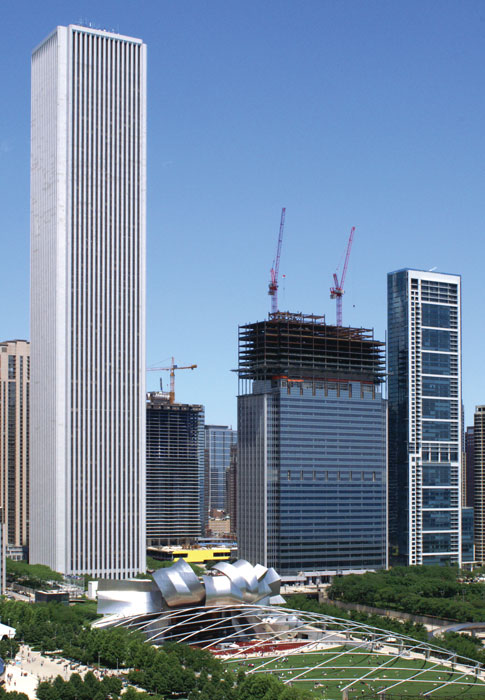Weight Watching: Adaptive Reuse with Structural Steel
Evaluating Conditions and Testing
When embarking upon any type of adaptive structural steel project, the first step is evaluating the existing structural framing. Obtaining the original design drawings is ideal, in addition to procuring any subsequent changes. Reynolds advises then visiting the site to confirm that the existing drawings are consistent with what appears in actuality. Unfortunately, it’s not unusual to discover that existing drawings and documentation either don’t exist or are incomplete.
“Surveying the site, locating framing, taking measurements of the framing, acquiring material samples, and performing testing can all be done to verify the existing framing in place,” she explains. “Generally, steel structures can be easier to verify, assuming the structural framing is accessible. In recent years, the progression of 3-D/digital scanning of spaces is facilitating the process of surveying and measuring existing framing.”
On the other hand, concrete structures can be more difficult to ascertain, unless scanning is utilized to determine the size, spacing, and location of is the reinforcements hidden within concrete framing.
In terms of material testing, these samples are evaluated for performance strength and material compositions in a laboratory. However, it can be tricky to determine where to extract the specimens so as to not compromise the integrity of the existing building.
As such, Su recommends cutting out these redundant segments of materials from safe places such as the ends of beams. “In my experience, I’ve found that structural steel, even from the early 1900s, can be weld-able,” he observes.
“Once the existing framing is known, the real fun can begin—analyzing the strength of the existing framing, determining what the new demand may be on the existing structure or how it needs to be modified to meet the new program, and then determining how to accommodate the project requirements, whether it’s adding new framing, removing existing framing, or reinforcing the existing framing to provide additional strength or stiffness,” relates Reynolds.
For existing projects where space constraints and access might be an issue—for instance, when member sizes are limited to something that can fit within an elevator—steel can be broken into smaller pieces and re-attached during installation.
In terms of evaluating cost and feasibility for adaptive reuse, one of the main cost thresholds is the trigger for lateral upgrades, i.e., modern seismic and wind loads. This evaluation involves the original use versus intended use, the percentage of reinforced structure compared to the whole, and changes in area and weight loads, says Su. Considerable effort goes into gathering information, narrowing down options, and analyzing for levels of force changes in the adapted building.
“For expansion, the capability of the existing structure to be reinforced for both increased lateral and gravity loads is usually the key consideration,” says Su. “Usually, there are limits on how much space can be taken up by reinforcing measures, and the smaller the better.”
Overall, access and accommodating the installation of new framing must also be weighed, and as previously noted, existing documentation is important. If little to no information is available, this requires additional time and money for extensive surveying, testing, and documentation of the existing structure. Ultimately, inadequate information can result in more conservative solutions due to the unknown.

Photo courtesy of MKA
For Blue Cross Blue Shield, MKA’s optimized design of the lateral system, which incorporated a multistory intermediary truss, resulted in a 300-ton, 20 percent reduction.









